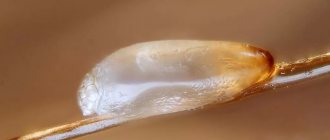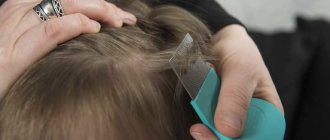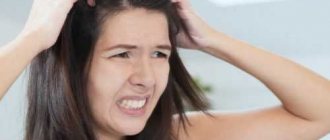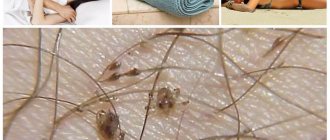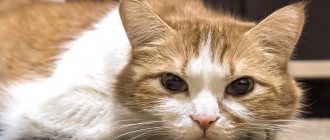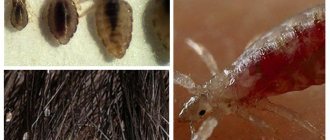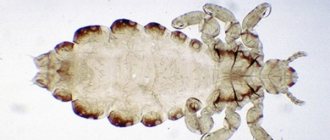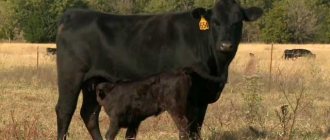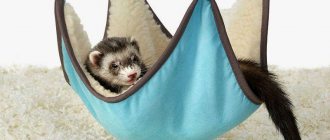Pediculosis is a disease that can develop in every person, regardless of his age, social status and hygiene regime. This is a contagious disease. In order to catch lice, you just need to stand or walk next to a person who is their carrier. No one is immune from this, especially for children, since they are often in close contact with others in children's groups, which means they can pick up lice faster than adults.
But one insect does not cause head lice. To make such a diagnosis, a more significant lice infestation and development of the parasite population must be present. After how many days can it be said that a person has lice? Let's take a closer look below.
How long does it take for a louse to hatch?
These parasites are species-specific - they can feed on human blood and only human blood. Lice and nits have no other victims. Parasites bite and drink blood already from the nymph stage, and only an adult insect can reproduce. The first mating occurs only after the last molt and the first bite after that. To leave offspring, lice must constantly receive food. They drink blood every 3 – 4 hours. If they are left without food, they cannot reproduce. That's why it's important to start pest control right away so as not to give lice a chance to further increase the population.
Stages of their development:
- Nits are lice eggs. They ripen on average within 5 – 8 days. The period of egg development depends on external conditions, primarily on temperature. The temperature of the human body is considered the most favorable, so head lice lay eggs as close to the scalp as possible. In this case, lice hatch from nits within 5 days. When the temperature decreases or increases, the incubation period of nits increases. They stop their development, but do not die. And as external conditions improve, their development continues. In particularly severe cases, the larva can hatch after 16 days. If the nit somehow ends up outside the human body, then it can fall into a state of suspended animation. At this time, all vital functions in the larva are suspended.
- The first order nymph is the first stage of lice development. The larva reaches a size of 1.5 mm, which is larger than the size of a nit. She opens the egg and leaves it, then growth occurs for five days, after which the first moult occurs. The insect's shell does not keep up with its growth, so the parasite sheds it, increasing in size.
- The second-order nymph is the stage of the louse's life cycle between the first and second moults. It takes 5 – 8 days. During this time, the parasite increases significantly in size. At first the louse is 1.75 mm in size, and by the second molt it reaches 2 mm.
- Nymph of the third order - at this stage, the insect’s legs lengthen, the body becomes more elongated and exceeds 2.4 mm in length. After the third molt, the nymph turns into an imago, that is, an adult. For such a transformation she needs from 5 to 8 days.
The difference between an adult and a nymph is sexual maturity. An adult louse is able to reproduce on the second day after becoming an adult.
So, to answer the question of how long it takes for lice to appear in large numbers after contact with an infected person, you need to calculate the total development time. After the insect lays eggs, the new adult will begin to parasitize and produce subsequent generations within three weeks. Under ideal conditions, it takes 10 days from hatching from an egg to becoming an adult insect.
Above we talked about head lice. The life cycle of pubic lice is the same. Body lice develop a little more slowly. But in general, all types of lice go through the same stages of development. The difference is that linen lice lay eggs in clothes, underwear, towels, etc. There may not be such a favorable air temperature or humidity for the insect to develop in the shortest possible time. In addition, starting from the first nymph stage, the parasite can bite and suck blood. He needs food, so he goes hunting before reaching maturity. If it does not have a constantly available source of power, then its rate of development slows down.
How quickly do lice begin to bother you after infection?
The first bites may appear within a few hours after the parasites enter the body. This suggests that the lice adapted instantly. Insects can survive without food for a maximum of several days, but some species hibernate under unfavorable conditions and remain without food for weeks.
Parasite bites are not always given importance. Itching is also associated with other factors, such as dandruff. But since the process of lice reproduction occurs very quickly, the consequences of their appearance can be detected within a month after entering the human body. This period is sufficient for the development of a new generation of nymphs and their active effect on the skin.
More pronounced symptoms occur with the appearance of the second generation, which, under favorable conditions, grows by the end of the third week after infection. The patient itches a lot and experiences discomfort. Parasites can be detected by examining the head.
After how many days do lice become more numerous?
If at least one sexually mature individual appears on the head, it begins on the same day not only to bite, but also to lay eggs. One female lays an average of 4 eggs per day. That is, after 16–20 days there will be about 80 nits and lice on the head, including adults, ready for mating and further reproduction. Their number will increase exponentially. Among them there may be insects with increased fertility, laying up to ten eggs a day, so it is necessary to urgently begin the fight (for more details, see the article “How to get rid of lice forever.”
How to find out when lice appeared and where they got infected from? You need to carefully examine your head. If there are only nits on it, and no adults are visible, then no more than 5 days have passed. If insects about 3 mm in size are visible, it means that 2–3 weeks have already passed since the infection.
PEDICULOSIS (lice)
| Lice and nits |
Pediculosis (lice) is caused by parasites that live on human skin and feed on his blood.
Infection occurs through contact with a lice-infected patient. Lice develops under unfavorable sanitary and hygienic conditions. However, pediculosis can also occur in completely clean and prosperous citizens upon contact with a sick person. It is believed that bursts of solar activity, enhancing the growth and reproduction of parasites, as well as a decrease in the general immunological reactivity of the population, may play a role in the spread of lice.
The group of lice includes three species, each of which causes one of the manifestations of lice.
Head lice (Pediculus humanus capitis)
A head louse is evidence of hygienic problems in the community where it has the opportunity to spread.
It lives on the scalp, feeds on blood and lays eggs, attaching them to the hair - these are nits that are easy to see with the naked eye. Over the course of 20–30 days, the louse lays up to 10 eggs (nits) per day. After 8 - 10 days, larvae form from the nit, which then turn into an adult louse, which after 10 - 15 days begins to lay eggs on its own. The lifespan of a louse is up to 38 days. Head lice occur at any age, but they are most often observed in girls and women. Infection occurs through hats, hairbrushes, combs, and also through direct contact with the patient. Outside the host, a head louse can live for about 55 hours. Outbreaks of pediculosis are known in schools, kindergartens, sanatoriums, and summer camps. The disease is characterized by severe itching at the site of the insect bite and irritation that occurs due to the action of the secretion of the salivary glands. Most often, patients are bothered by itching of the scalp, especially in the back of the head, temples and behind the ears. As a result of itching, scratches and crusts appear, and a secondary infection may occur. As pyoderma develops, nearby lymph nodes become enlarged. Purulent crusts appear at the site of scratching. In severe cases, a tangle is formed - a mass of tangled hair, lice, nits, and crusts glued together with exudate.
Body lice (Pediculus humanus corporis or Pediculus humanus vestimenti)
Body lice are carriers of typhus and relapsing fever.
They parasitize in places where the folds and seams of linen come into contact with the body. Untidy adults get sick more often, children less often. When in contact with the human body, the body louse moves to the skin only to suck blood. The body louse lives and lays nits in the folds of clothes and linen. On human skin, body lice are usually found in the neck area, between the shoulder blades and in the lumbar region; subsequently, secondary light brown pigmentation persists in these places for a long time. At the sites of bites, vascular spots and itchy papulourtic elements are visible. As the itching increases, scratching appears and a secondary infection may develop. With a long course of the disease, areas of thickened skin with scratching, peeling, and a light brown or dirty gray color develop in these areas. After treatment, hyperpigmented spots remain.
Pubic lice (Pediculus pubis)
Pubic lice, usually found in adults, are spread through sexual contact.
Pubic lice is a sexually transmitted infection. Infection through a shared bed, washcloth, or towel is possible, but this route of transmission is rare. The pubic louse - the flat louse - lays eggs at the base of the hair, and itself is attached with its proboscis to the mouths of the hair follicles, usually on the skin of the pubis and scrotum, but can be found on the abdomen and other areas of the skin covered with hair, especially bristly (pediculosis in the eyebrow area is often found, eyelashes, mustache, beard, armpits). The pubic louse looks like a gray-brown speck 1-2 mm in size, which is attached to the base of the hair, while its mouthparts are buried in the skin. She sits in one place for several days. The number of lice is small. Pubic lice bites cause severe itching of the skin and, as a result, scratching. At the sites of flatworm bites, round bluish-gray nodules with a diameter of 3 mm to 1 cm appear.
Treatment of pediculosis
Treatment of pediculosis a few years ago was fraught with some difficulties.
In particular, to treat head lice, a 10% water soap-kerosene emulsion was used, which was applied to the scalp for 30 minutes, and then the hair was washed with soap and the hair was combed with a fine comb to remove dead parasites. Toxic compounds were also used - 0.15% aqueous emulsion of karbofos, 10% sulfur ointment, 20% ointment or water-soap emulsion of benzyl benzoate. The treatment had to be carried out repeatedly. For the treatment of head and pubic lice, the universal preparations Medifox and Medifox-super are used (the active ingredient is permethrin, 5% and 20%, respectively). The drugs are 100% ovicidal. To treat the scalp, 2 ml of Medifox is mixed with 30 ml of water, then the aqueous emulsion is applied with a swab to moistened hair. After 20 minutes, wash off with warm running water and shampoo. The most economical is Medifox-super; 0.5-1 ml of the product is enough to treat one person.
Medifox and Medifox-super are also used for treating underwear, bed linen, outerwear and for disinsection of premises from lice and scabies mites. Underwear and bed linen are soaked in a water emulsion or irrigated until lightly moistened. After disinfestation, the laundry is thoroughly rinsed and soaked for a day in a solution of soda ash, after which it is washed in the usual way. Insect habitats - collars, belts, seams, folds - are treated with special care. Treated items can be used after drying and airing. Medifox-super is approved for treating clothing to prevent lice infection. Underwear and outerwear are irrigated with Medifox-super water emulsion. After airing, the treated items can be worn for a week or until a scheduled change of linen. Treated clothing protects a person from lice, even if he gets into the center of lice. As a result, he ceases to be a carrier of lice.
Nittyfor. Destroys nits, larvae and mature individuals of head and pubic lice. Solution for external use: 60 ml (300 mg permethrin) in a bottle.
Mode of application. Moisten the hair generously with the solution using a cotton swab, rubbing the preparation into the hair roots. Typically, 10 to 60 ml of the drug is consumed per person, depending on the thickness and length of the hair. After treatment, the head is covered with a scarf, and after 40 minutes the nittifor is washed off with warm running water and soap or shampoo. After washing, the hair is combed with a fine comb to remove dead insects.
The high effectiveness of the drugs paraplus, spray-pax, and A-PAR has been proven. They are produced in a convenient form. It is very important that these drugs are safe, do not cause side effects or complications and require a single use. Thanks to the use of A-PAR, paraplus, and spray-pax preparations, the treatment time for head lice has been significantly reduced. Treatment begins with washing the body with soap, changing and disinfecting underwear and bed linen. To treat clothing, bed linen, mattresses and blankets, A-PAR is used, which contains active substances: esdepalitrin, piperonyl butoxide. A-PAR is used as part of a set of measures to treat parasitic diseases and helps avoid re-infections. The preparation does not leave stains on fabrics; when using it, subsequent washing of the treated items is not required. Esdepalletrin, which is part of this drug, acts at the level of the nervous system of insects: it disrupts the cation conductivity of nerve cells. Upon contact with the active substance, the insect begins to experience agitation, convulsions and paralysis. Death occurs due to paralysis. Using one cylinder allows you to process a set of things for 2-3 people at once.
Simultaneously with the treatment of clothing, linen, and bedding, pediculosis is treated.
Paraplus. It is used to treat head lice and destroys nits and lice.
Aerosol for external use: 90 g in a bottle (spray can). It contains: permethrin, malathion, piperonyl butoxide.
Permethrin, which is part of the drug, is a neurotoxic poison for insects. Other components of the drug enhance the effect of permethrin and prevent the development of resistance to the drug.
Mode of application. The drug is sprayed from a can onto the scalp and the entire length of the hair. Exposure of the drug is 10 minutes. Then you need to wash your hair with shampoo. Dead parasites and nits are combed out with a fine comb.
Spray pack. Used to treat lice pubis.
Aerosol for external use. Contains pyrethrum extract 25%, piperonyl butoxide. Natural pyrethrins (pyrethrum flower extract) and piperonyl butoxide have a pediculocidal effect.
Mode of application. The drug is sprayed onto the pubic hair and left for 30 minutes, then washed thoroughly with soap and rinsed with water. One-time use is sufficient.
To avoid re-infection, it is necessary to treat clothing, hats, and bedding with A-PAR. It is necessary to avoid getting the drug on the face. If you accidentally get the medicine into your eyes, rinse them thoroughly with warm water.
If lice is detected in at least one family member, it is necessary to carry out preventive treatment of the belongings of all family members who are in close contact with the patient.
Prevention of head lice requires compliance with basic hygiene measures. An important preventive measure is a careful examination of all those entering hospital treatment, as well as conscripts returning from leave, children in kindergartens and schools.
N. G. Korotky, Doctor of Medical Sciences, Professor N. M. Sharova Russian State Medical University, Moscow
| Lice and nits |
Does head lice go away on its own?
If a person comes into contact with a lice carrier - he walks nearby or, for example, puts on a hat - he can pick up one parasite. This may be a sexually mature female, but she still needs a male to reproduce. If it is not there, then the disease may not develop. The insect will simply drink blood and die after some time. On average, these insects live about 40 days (more details in the article “How long do lice live without humans”). But there are few cases of infection by single individuals that do not leave offspring. More often you have to deal with the rapidly growing population of insects in your hair. Pediculosis itself does not go away even after some time.
How to destroy nits and lice during the incubation period
First of all, carefully examine the head, paying attention to the roots of the hair. That's where the nits are. They are very small - only 1 mm long. But there can be a lot of them, and in large quantities they look like dandruff. It is worth considering that with the naked eye it is impossible to distinguish nits with larvae developing in them from empty ones. This is visible only at high magnification (more details in the article “How to detect lice and nits”).
If less than five days have passed since contact with a lice carrier or with his personal belongings, it is necessary to get rid of nits. They are attached to the hair using a very sticky substance. To peel them off, you need to use special tools. Among the traditional methods, acidic substances help well - a vinegar solution, for example. You also need a comb with very fine teeth to thoroughly comb out nits and lice (for more details, see the article “How to get rid of lice”).
In any case - when the lice are still developing or have already hatched - they need to be dealt with. For this, we recommend a line of professional pediculicides produced by the Moscow company Laboratory Medilis. These drugs are: Medilis - Permifen, Medilis-Malathion, Medilis-Super, Medilis-I, and Medilis-BIO lotion is intended for the treatment not only of adults, but also of the youngest patients from 5 years of age.
